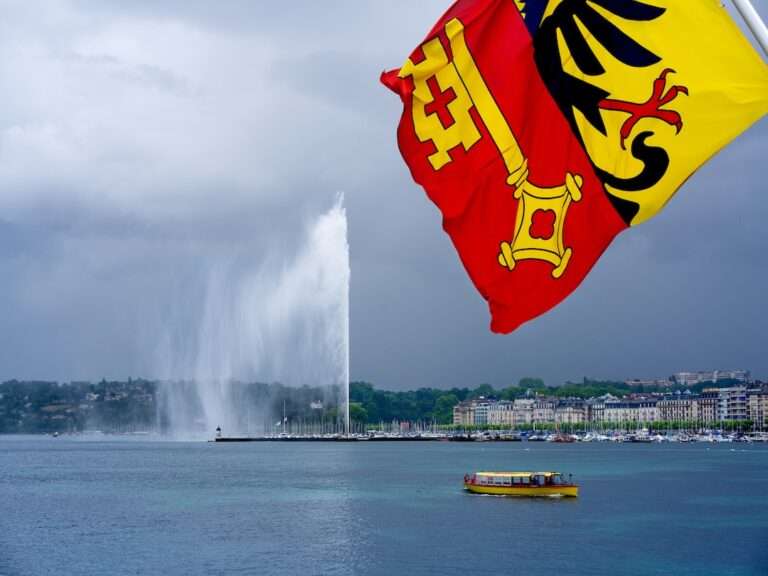Everything About Political Symbolism
Political symbolism refers to the use of symbols, such as images, colors, and gestures, to convey political messages and ideas. These symbols hold significant meaning and can shape our understanding of politics and the world around us. Understanding political symbolism is crucial because it allows us to analyze and interpret the messages being conveyed by political actors, whether they are governments, political parties, or social movements. By examining the use of symbols in politics, we can gain insights into the motivations and strategies of political actors, as well as the impact these symbols have on society.
The Power of Political Symbolism
Political symbols have the power to shape our world in profound ways. They can evoke strong emotions, rally support, and create a sense of unity among a group of people. For example, the American flag is a powerful symbol that represents the values and ideals of the United States. It is a symbol that unites Americans and instills a sense of patriotism and national pride.
Symbols can also be used to manipulate public opinion and control narratives. Political actors often use symbols strategically to shape public perception and advance their own agendas. For instance, authoritarian regimes may use symbols to create a cult of personality around their leaders or to suppress dissent.
Historical Significance of Political Symbols
Throughout history, political symbols have played a significant role in shaping societies and influencing political events. The French Revolution, for example, saw the rise of powerful symbols such as the tricolor flag and the Phrygian cap, which represented the ideals of liberty, equality, and fraternity. These symbols became rallying cries for revolutionaries and helped mobilize support for their cause.
Similarly, during World War II, Nazi Germany used symbols such as the swastika and the eagle to promote their ideology of Aryan supremacy and create a sense of national identity among Germans. These symbols were used to rally support for Hitler’s regime and justify their actions.
The Role of Political Symbolism in Contemporary Politics
In modern politics, political symbols continue to play a crucial role. They are used by political parties, governments, and social movements to communicate their values, goals, and ideologies. For example, the red rose is a symbol commonly associated with socialist and social democratic parties around the world. It represents their commitment to social justice and equality.
Political symbols are also used to mobilize support and create a sense of belonging among supporters. For instance, the Make America Great Again (MAGA) hat became a powerful symbol during Donald Trump’s presidential campaign in 2016. It represented a desire to return to a perceived golden age of American greatness and resonated with many voters.
National Symbols and Identity
National symbols play a significant role in shaping national identity. They represent the values, history, and culture of a nation and help foster a sense of belonging among its citizens. For example, the bald eagle is a symbol of the United States and represents freedom, strength, and independence.
National symbols can also be used to promote unity and patriotism. In India, for instance, the national flag is a powerful symbol that represents the diversity and unity of the country. It is a symbol that transcends regional and religious differences and fosters a sense of national pride.
The Use of Color in Political Symbolism

Color plays an important role in political symbolism as it can evoke strong emotions and convey specific meanings. Different colors are often associated with different political ideologies or movements. For example, red is commonly associated with socialism or communism, while blue is often associated with conservatism or right-wing politics.
Political symbols that use color can be highly effective in conveying messages and mobilizing support. For instance, the rainbow flag has become a powerful symbol for the LGBTQ+ rights movement. It represents diversity, inclusivity, and equality.
Religious Symbolism in Politics
The use of religious symbols in politics can be highly controversial and divisive. While religion can provide a sense of identity and values for individuals and communities, it can also be used to exclude or marginalize certain groups. For example, the use of religious symbols in politics can lead to discrimination against religious minorities or the imposition of religious beliefs on others.
Religious symbols can also be used to legitimize political power and control. For instance, in some countries, political leaders may use religious symbols to gain support from religious institutions or to justify their policies.
Political Symbolism in Elections
Political symbols play a significant role in election campaigns. They are used by candidates and political parties to create a recognizable brand and convey their values and messages to voters. For example, the donkey is a symbol commonly associated with the Democratic Party in the United States, while the elephant is associated with the Republican Party.
Successful use of political symbols in elections can help candidates connect with voters and differentiate themselves from their opponents. However, the use of symbols can also backfire if they are not well-received or if they are seen as insincere or manipulative.
The Global Language of Political Symbolism
Political symbolism varies across cultures and societies. Symbols that hold significant meaning in one culture may not have the same impact in another. For example, the color red is often associated with luck and prosperity in Chinese culture, while it is associated with danger or warning in Western cultures.
Understanding the cultural context of political symbols is crucial for effective communication and engagement. Political actors must be aware of how their symbols may be interpreted by different audiences and adapt their messaging accordingly.
The Future of Political Symbolism
As the world continues to change and evolve, so too will political symbolism. New technologies and platforms for communication will provide new opportunities for political actors to convey their messages and mobilize support. However, challenges such as misinformation and polarization may also complicate the use of political symbols.
In conclusion, understanding political symbolism is crucial for analyzing and interpreting political messages and understanding the impact they have on society. Political symbols have the power to shape our world, evoke strong emotions, and create a sense of unity or division. They have played a significant role throughout history and continue to be used in contemporary politics. As the world continues to change, political symbolism will evolve, presenting new challenges and opportunities for political actors.
If you’re interested in exploring the symbolism behind political symbols, you might also find the article on “What Does the Moon Symbolize?” from Symbolism Hub intriguing. This article delves into the various meanings associated with the moon throughout history and across different cultures. From its connection to femininity and emotions to its representation of cycles and transformation, the moon holds significant symbolic value that can shed light on political symbolism as well. Read more
FAQs
What is political symbolism?
Political symbolism refers to the use of symbols, images, and gestures to convey political messages and ideas. It is a way for politicians and political groups to communicate their beliefs and values to the public.
What are some examples of political symbols?
Some examples of political symbols include national flags, political party logos, campaign slogans, and protest signs. These symbols are often used to represent a particular political ideology or movement.
How is political symbolism used in elections?
Political symbolism is often used in elections to create a strong visual identity for a candidate or political party. This can include the use of specific colors, logos, and slogans that are designed to appeal to voters and convey a particular message.
What is the significance of political symbolism?
Political symbolism is significant because it can help to shape public opinion and influence political outcomes. By using symbols and images that resonate with voters, politicians and political groups can create a powerful emotional connection with their audience and mobilize support for their cause.
How has political symbolism been used throughout history?
Political symbolism has been used throughout history to promote political ideologies and movements. Examples include the use of the swastika by the Nazi party in Germany, the hammer and sickle by the Soviet Union, and the American flag by the United States.
What are some criticisms of political symbolism?
Critics of political symbolism argue that it can be manipulative and superficial, and that it often distracts from more substantive political issues. Additionally, some symbols may be offensive or exclusionary to certain groups of people.





